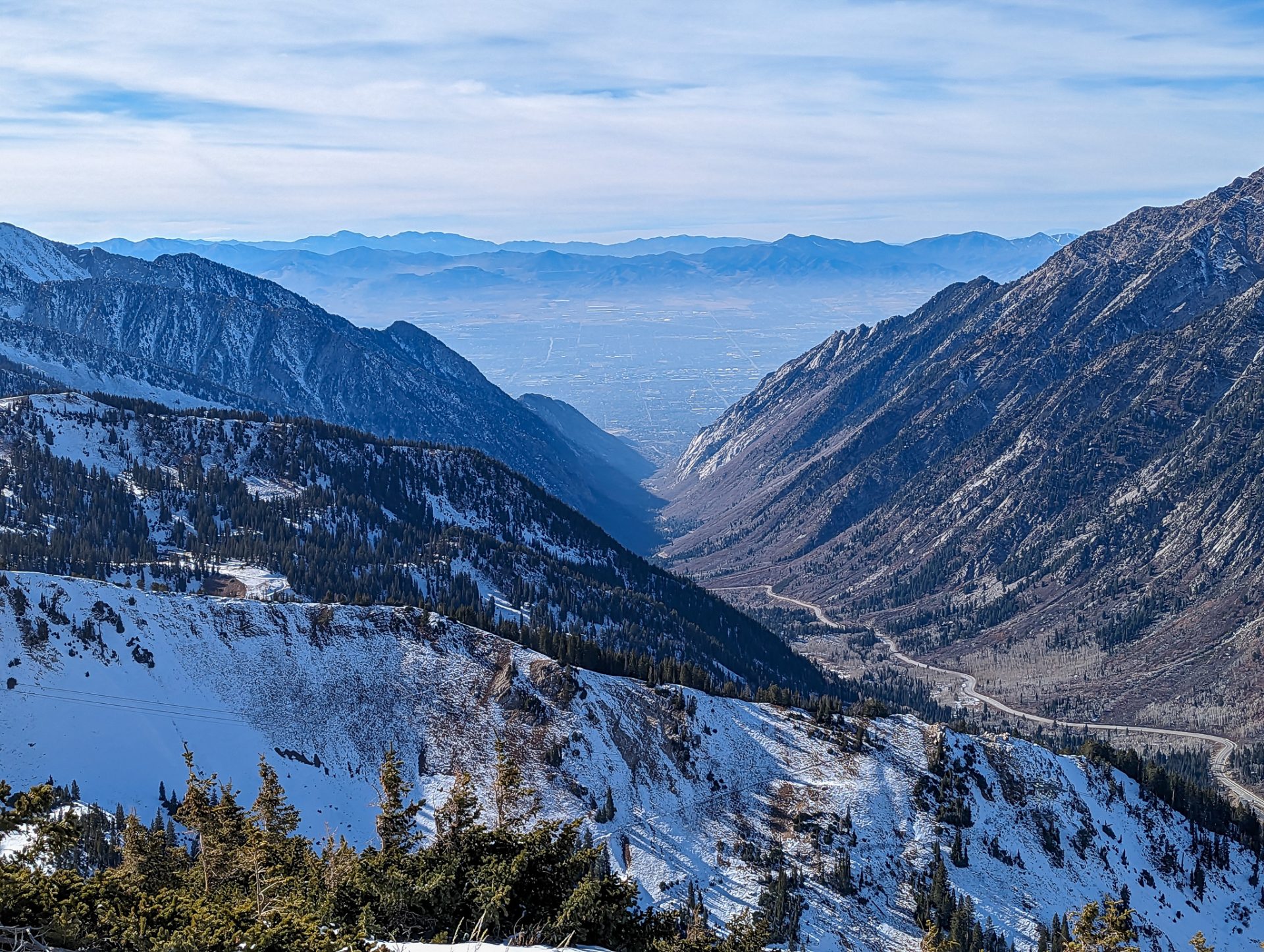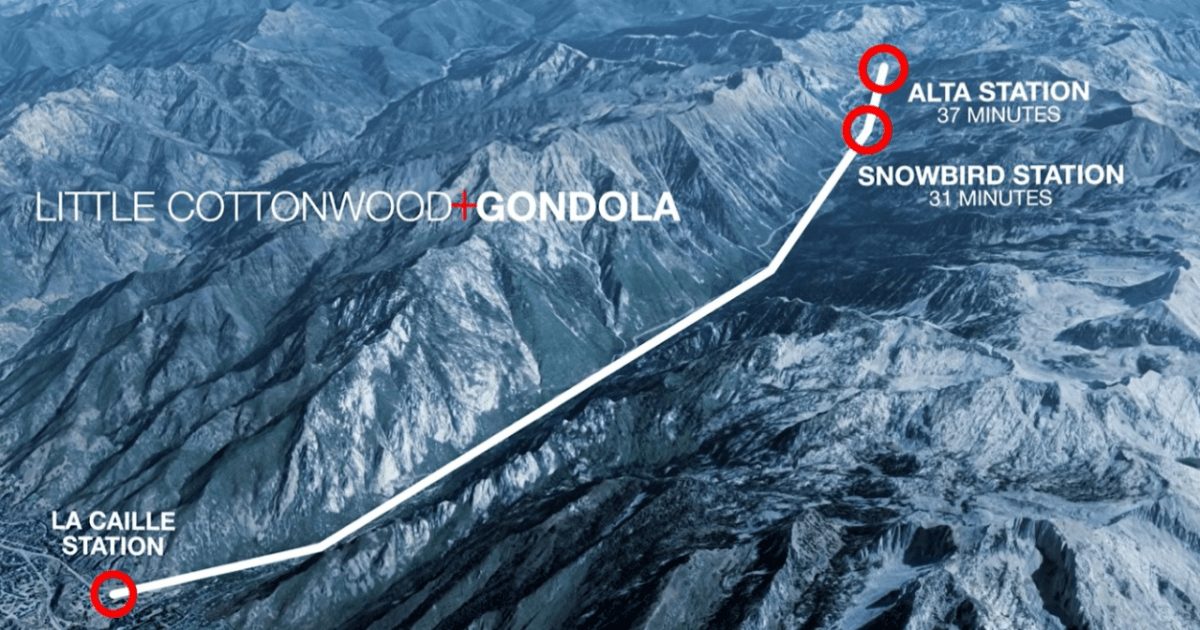
The fight over the Little Cottonwood Canyon Gondola Project in Utah has reached Federal Court. On Monday (12/4), a coalition of several non-profit groups and private citizens filed a lawsuit challenging the Utah Department of Transportation (‘UDOT’) decision to approve a development plan for State Route 210 (Little Cottonwood Canyon) that would eventually include the construction of an 8-mile long gondola, which would be the longest in the world. The lawsuit alleges that UDOT exceeded its authority granted by the Federal Highway Administration and that it failed to conduct an adequate environmental impact statement (‘EIS’) for the project.
The 91-page lawsuit — lengthy for these types of decision challenges — focuses on a couple of key alleged shortcomings of the EIS as well as an alleged inadequate response to the extensive public comments the initial and final EIS received. One of the more substantial assertions of the lawsuit is that UDOT did not adequately study the impact the project would have on sensitive species found in Little Cottonwood Canyon. The lawsuit states that Golden Eagles and nests of Golden Eagles have been observed in Little Cottonwood Canyon and that “UDOT did not discuss, consider, or identify any golden eagle nests in the impact analysis area.” Golden eagles are protected under the Bald and Golden Eagle Protection Act. Further, the lawsuit states that “UDOT received ‘a list of 16 Forest Service sensitive species that are known or suspected to occur in the Salt Lake Ranger District’ from [Forest Service] representatives […] but according to UDOT, ‘General field surveys conducted prior to the release of the Draft EIS did not identify any of the species listed.’”
Little Cottonwood Canyon is home to several historic lead smelting sites that operated in the mid-1800s. These sites are now classified as active or inactive superfund sites, due to varying levels of lead and arsenic contamination in the soil. Volume 4 of the EIS states for each of the sites: “Prior to construction, UDOT would conduct an environmental site investigation to determine the extent of the potential contamination, if any. If contamination is found, an avoidance or a remediation plan would be developed” and the lawsuit makes the argument that the EIS should have included a more thorough study of the contamination risk each of these sites poses. The inclusion of further study in the EIS would be so that possible mitigation efforts, and the costs for those efforts, would be considered as part of the project in the official decision making process.

More than 50,000 public comments about the project were submitted. One of the plaintiffs in the lawsuit has stated that over 80% of the public comments are against the project. KUTV found that only 61% of commenters are against the construction of the gondola. Black Diamond and Patagonia have expressed opposition to the gondola project, while the Governor of Utah and the General Manager of Snowbird are in favor of the project moving forward. Josh Van Jura, the project manager for the EIS, has said that the public comment process is not a vote but rather “an opportunity for UDOT to field suggestions or criticism for a project and to evaluate whether additional engineering and/or environmental analysis were needed based on the feedback.” Though UDOT provided general responses to the extensive public comments as part of the final EIS, the lawsuit alleges that “UDOT ignored the vast majority of public comments.”
Under the current plan, construction of the gondola would not begin until Phase III of the project, probably sometime in 2042 – 2050. However, any legal challenges to decisions of this type typically must be filed shortly after the decision is made, which is why the lawsuit was filed this week. If the judge rules in favor of the plaintiffs, UDOT would likely have to start the decision-making process over again, with another environmental impact study. However, a ruling in favor of the plaintiffs would not necessarily preclude UDOT from making the same decision in favor of a gondola after a more thorough study. Lawsuits of this type are typically brought to slow down development projects. Given the anticipated length of this project, delays over legal battles may not provide much of an obstacle.
With gondola construction not due to start until 2042 – 2050, this lawsuit may be the first of many challenges to the project. Funding the second and third phases of the project will require legislative action. A political fight over funding for the project could prove to be the largest obstacle to the whole project. John Gleason, a spokesperson for UDOT, issued the following statement regarding the lawsuit: “At this time, we do not know the full impact the legal challenge will have on our implementation of improvements such as bus service and tolling. We will continue to assess potential schedule impacts to Phase 1 as we work through the legal process.”
3 thoughts on “Lawsuit Filed Against Little Cottonwood Canyon, UT Gondola: What Does It Say and What Does It Mean?”